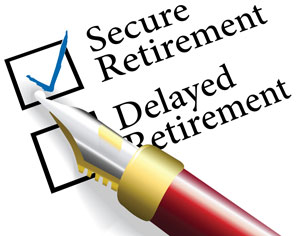A Plan Sponsor Checklist
 Once a retirement savings plan has been approved and is in place, it’s tempting for a plan sponsor to sit back and adopt an “I’m done,” hands-off attitude. However, to ensure that a plan continues to operate effectively, employers should periodically review plan provisions and features.
Once a retirement savings plan has been approved and is in place, it’s tempting for a plan sponsor to sit back and adopt an “I’m done,” hands-off attitude. However, to ensure that a plan continues to operate effectively, employers should periodically review plan provisions and features.
Here is a brief checklist of key points to keep in mind.
- How is the plan presented to employees? The more convinced employees are of the wisdom of saving for retirement, the greater the level of employee participation. The greater the participation, the more the plan can benefit all employees — including highly compensated employees. Regular meetings, a robust and easy-to-navigate website, and educational print materials such as newsletters are effective means of communicating plan advantages.
- Plan investments. Employers that sponsor participant-directed plans can limit potential legal liability for losses caused by employees’ investment decisions if plan investment choices meet certain requirements under Section 404(c). Very generally, where 404(c) protection is sought, a plan should offer at least three “core” investment choices, allow employees to switch investments at least once each quarter, and provide participants with adequate disclosure of specified investment information.
- Participants and beneficiaries must be given a copy of the Summary Plan Description (SPD) within 120 days after a plan is adopted or within 90 days after becoming eligible to participate in the plan or receive benefits. Review the SPD to make sure it accurately describes the provisions of your plan. If changes have been made to the plan document, all participants must receive a notification of these changes within 210 days after the end of the plan year in which the changes were adopted. Generally, all participants must receive a copy of the SPD every five years.
- Summary annual reports must be distributed to participants within nine months after the close of the plan year. If a plan receives an extension to file its annual report (Form 5500) with the IRS, then the summary annual report must be distributed within two months after the end of the extension.
- Plan rollovers. Qualified plans must allow a participant to elect direct rollover of any eligible distribution to an IRA or another employer-sponsored retirement plan. Your plan should have procedures in place to handle direct rollovers.
- Generally, plan fiduciaries and others who handle the assets of a plan must be bonded. The bond must be equal to at least 10% of the funds handled by the bonded individual, but cannot be for less than $1,000 and need not be for more than $500,000.
- Loans to participants. Loans that are not properly administered may be treated as constructive distributions resulting in taxable income to the recipients. Review loans to make sure that loan balances do not exceed the maximum limitations. Unless used to finance the purchase of a principal residence, all loans must be repaid within five years. A plan may impose more stringent conditions on loans than the law requires.
- Plan forms. All forms should meet current requirements. Forms that may need updating include beneficiary designation forms, benefit election forms, and the notice of distribution options.
If you are unsure whether your plan currently meets all the requirements of this checklist, or if you would like assistance reviewing your plan, please contact your plan advisor.
Because of the possibility of human or mechanical error by Wealth Management Systems Inc. or its sources, neither Wealth Management Systems Inc. nor its sources guarantees the accuracy, adequacy, completeness or availability of any information and is not responsible for any errors or omissions or for the results obtained from the use of such information. In no event shall Wealth Management Systems Inc. be liable for any indirect, special or consequential damages in connection with subscriber’s or others’ use of the content.
© 2016 Wealth Management Systems Inc. All rights reserved.




